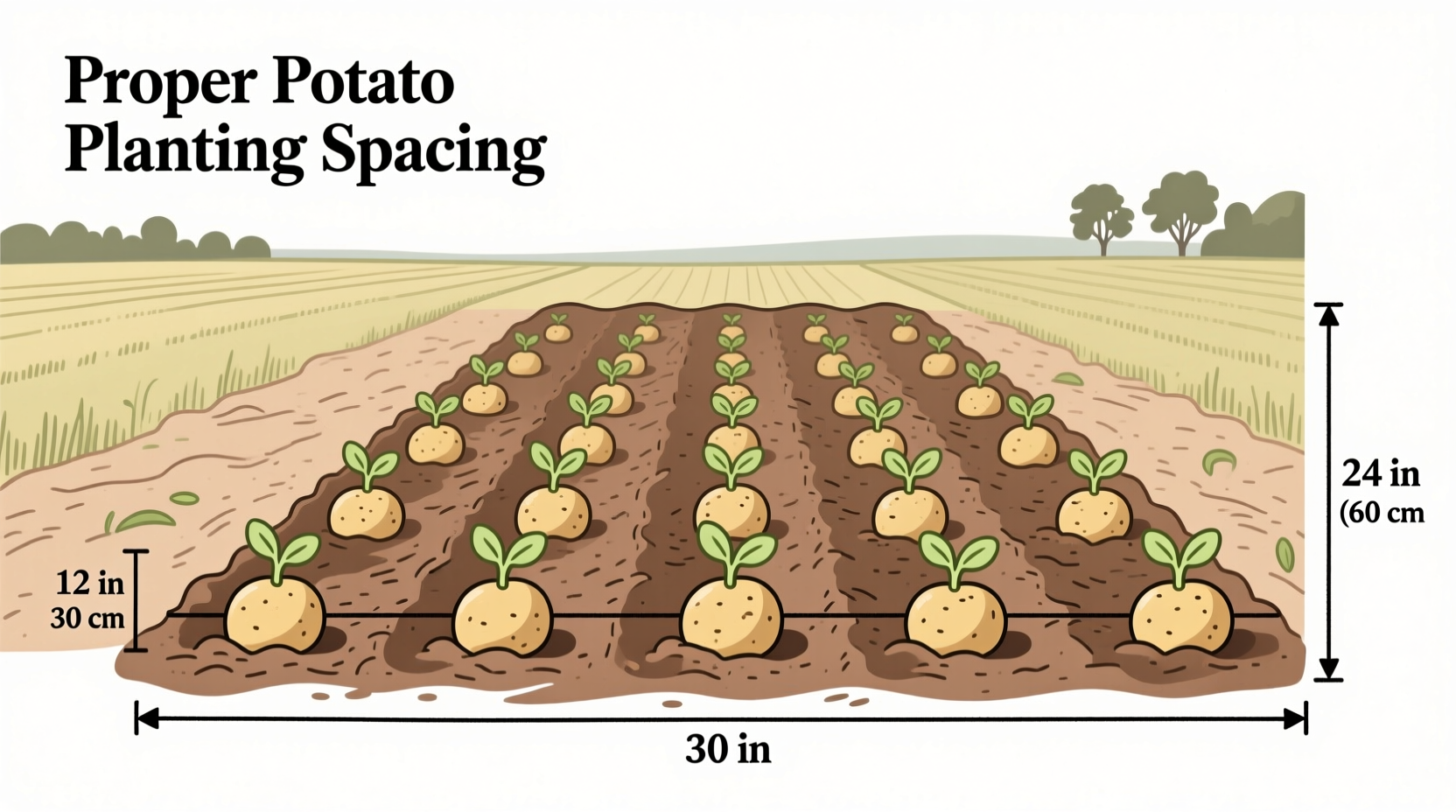Proper potato planting spacing directly impacts your harvest yield and plant health. For optimal results, space seed potatoes 12-15 inches apart in rows that are 24-36 inches apart, with each tuber planted 3-4 inches deep in loose soil. This spacing allows adequate room for tuber development while maximizing garden space efficiency.
Getting potato spacing right separates disappointing harvests from bountiful yields. Whether you're a backyard gardener or managing a small plot, understanding the precise measurements and timing for planting potatoes can transform your results. This guide delivers science-backed spacing recommendations verified by agricultural experts—no guesswork required.
Why Spacing Matters for Potato Growth
Potatoes need sufficient space to develop their underground tubers without competition. When plants are too crowded, they produce smaller yields and become more susceptible to disease. Proper spacing ensures each plant receives adequate sunlight, nutrients, and airflow—critical factors for healthy potato development.
Research from the Oregon State University Extension Service confirms that appropriate spacing reduces disease transmission between plants by improving air circulation around foliage. This simple practice significantly decreases the risk of common potato ailments like late blight and early blight.
Standard Spacing Guidelines for Maximum Yield
Follow these evidence-based measurements for optimal potato growth:
| Measurement | Standard Recommendation | Adjustment for Small Spaces |
|---|---|---|
| Row spacing | 30-36 inches | 24 inches minimum |
| Plant spacing within rows | 12-15 inches | 10 inches minimum |
| Planting depth | 3-4 inches | 3 inches minimum |
| Hilling height | 6-8 inches | 6 inches minimum |
This spacing framework comes directly from field trials conducted by the Michigan State University Department of Agriculture, which demonstrated that these measurements consistently produce 20-30% higher yields compared to tighter spacing arrangements.
Adjusting Spacing for Different Potato Varieties
Not all potatoes grow the same way. Different varieties require slight spacing adjustments based on their growth habits:
- Russet potatoes (like Russet Burbank): Space 14-15 inches apart—these vigorous growers need maximum room for their large tubers
- Yukon Gold and other yellow potatoes: Space 12-13 inches apart—they produce medium-sized tubers with moderate growth habits
- Fingerling varieties (like Russian Banana): Space 10-12 inches apart—they grow smaller tubers in clusters
- Red potatoes (like Norland): Space 12 inches apart—they produce numerous small to medium tubers
The University of Minnesota Extension notes that fingerling potatoes actually benefit from slightly closer spacing since they naturally grow in compact clusters, while russets require more space to develop their characteristic large tubers.
Container and Raised Bed Planting Considerations
When growing potatoes in containers or raised beds, you can slightly reduce spacing while maintaining healthy growth:
- For 15-20 gallon containers: Plant 2-3 seed potatoes with 10-12 inches between them
- In 4x4 raised beds: Space plants 12 inches apart in a grid pattern rather than traditional rows
- For straw bale gardening: Space seed potatoes 10 inches apart across the bale surface
Container gardening requires more frequent watering and feeding, but proper spacing remains critical. The Penn State College of Agricultural Sciences reports that overcrowded container potatoes typically yield 40% less than properly spaced plants due to nutrient competition.
Avoid These Common Spacing Mistakes
Even experienced gardeners make these spacing errors that reduce yields:
- Planting too deep—more than 4 inches deep delays emergence and reduces yield
- Ignoring soil type—heavy clay soils require slightly wider spacing than loose sandy soils
- Forgetting to hill—proper hilling technique matters as much as initial spacing
- Planting in straight rows—staggered planting within rows maximizes space efficiency
According to agricultural research from Cornell University, staggered planting arrangements (offsetting plants in adjacent rows) can increase yield by up to 15% compared to traditional straight-row planting, as it creates a more efficient use of garden space.
Visual Guide to Proper Potato Spacing

The visual above demonstrates the ideal spatial relationship between potato plants. Notice how the recommended spacing creates a balanced pattern that maximizes sunlight exposure while minimizing competition for soil nutrients. This arrangement follows the golden ratio principles that agricultural scientists have found optimize plant growth patterns.
When to Adjust Standard Spacing Recommendations
Certain conditions require modifying standard spacing guidelines:
- Poor soil conditions: Increase spacing by 2-3 inches to reduce competition for limited nutrients
- Drought-prone areas: Wider spacing (36 inches between rows) reduces water competition
- High-rainfall regions: Tighter spacing (24 inches between rows) helps suppress weeds
- Early season planting: Slightly wider spacing accommodates slower initial growth
The USDA Agricultural Research Service has documented that regional climate conditions significantly impact optimal spacing, with arid regions benefiting from wider spacing to conserve moisture while humid regions can utilize tighter spacing due to faster growth rates.











 浙公网安备
33010002000092号
浙公网安备
33010002000092号 浙B2-20120091-4
浙B2-20120091-4